Because our school programming is place-based whatever is happening in the place we are in influences what we learn about, what we play, what we experience in any given season. This includes weather and habitat, species of plants and animals, bodies of water, topography, etc. (Place-based can also mean local culture and traditions, historical connections to the land, and learner needs and interests).
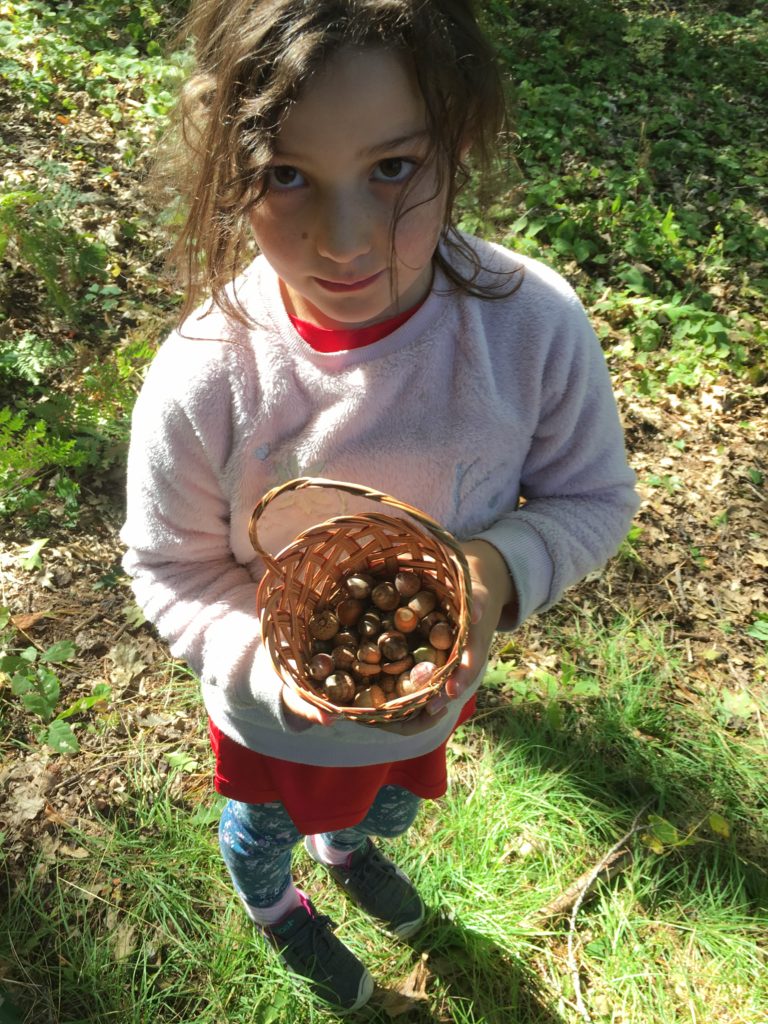
This past year was a mast year for Northern Red Oak trees. No surprise that acorns have found a way to be a part of our programming in fall/winter 2019! They dropped into our lives, into our outdoor programs, literally. Sometimes with a hard plunk on the head.
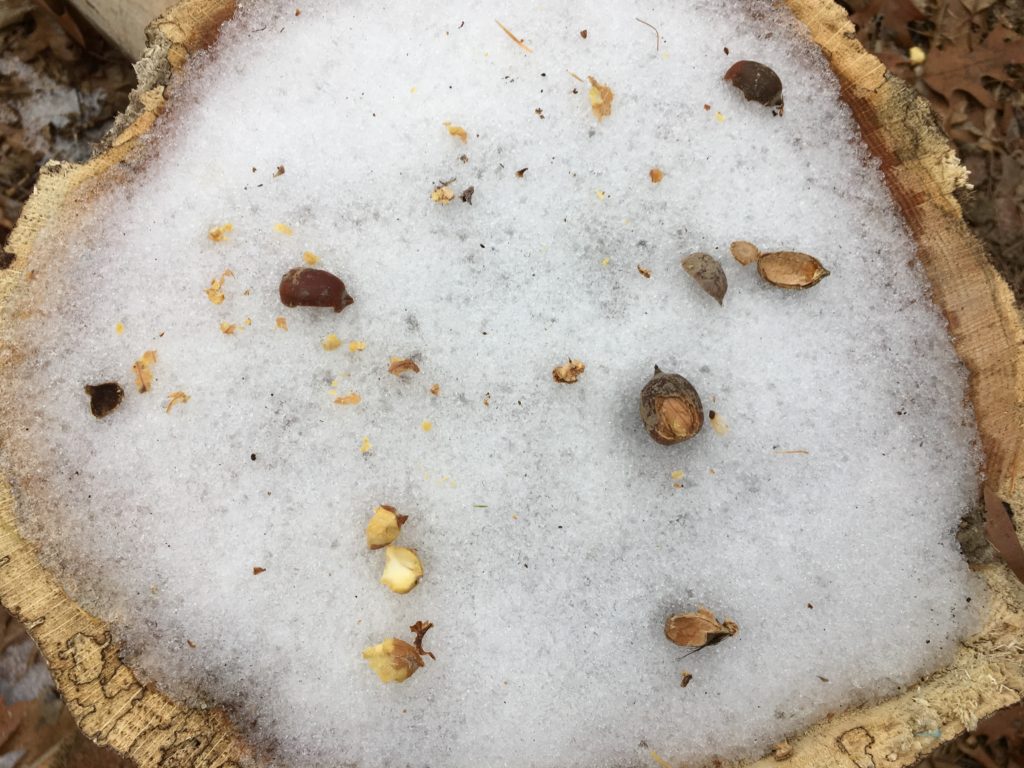
Integrating them into our learning and play was not pre-planned or really that intentional, rather this incorporation happened spontaneously, it emerged from our time in the forest. As the chipmunks and turkeys foraged for acorns, we did to. It seemed like the natural thing to do. I didn’t plan a lesson about acorns or oak trees or seasonal changes like I could have, many of us just felt the need to gather the smooth hard nuts, filing baskets and bags, piling them in rooted corners of the woods, cracking them open to see what was inside, even tasting them and wondering about the very bitter taste, learning later about tannins. (And by we, I mean both students K-1st graders and 8th graders – and teachers!) This is an example of emergent curriculum. The acorns were there, we were interested, and so we explored.
Some of us were so inspired we went home and did research on how to cook with acorns.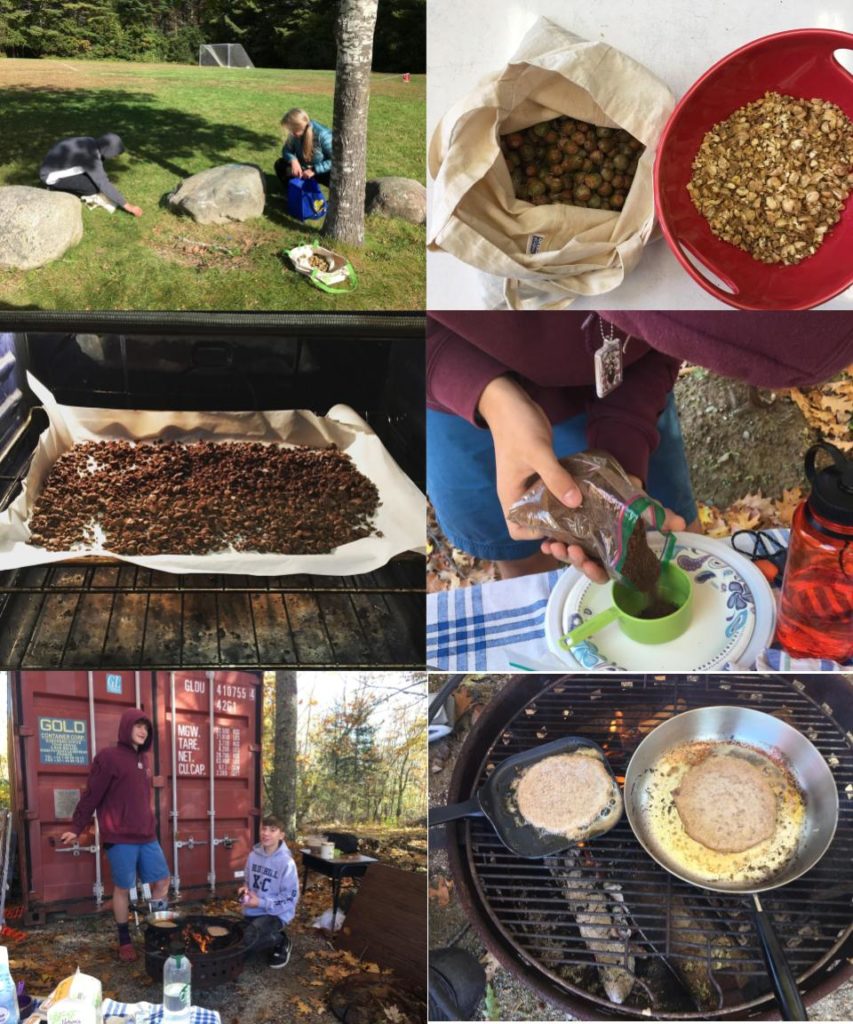
Some of us couldn’t get enough of gathering them for the mud kitchen and hearing them clank against the walls of the metal pots.
Some of us wondered where the chipmunks take acorns to store for the winter, and some of us decided to help the chipmunks store more.
Some of us wondered who ate the acorns on the stump, and why some half-eaten nuts have teeth marks and others do not.
Some of us made up acorn stories to tell and acorn gifts to share.
Some of us made full moon cookies for co-workers in the shape of the beloved acorn.
Some of us used them to share a message of thanks – throwing them into the river and saying aloud what we were thankful for before Thanksgiving.
Fall 2019 was a mast year for acorns if there ever was one! And this natural phenomena influenced what we concentrated on in some of our programs like Forest Days where letting the natural world be our first teacher is central to the approach.
It also allowed for a little everyday thing like an acorn to b e celebrated during the season of their flourishing. They became treasures for young and old rather than just common place slippery things on the sidewalk. Many of our program participants had no idea that acorns come from oak trees, that they are edible, that their flesh is white, that turkeys eat them, that they are bitter if consumed raw, but delicious when made into pancakes. So much learning fell from the sky unexpectedly as it always does when you pay attention and immerse yourself in the present moment in the forest right outside your back door (or your schools back door!). Thank you Surry Elementary School and Blue Hill Consolidated School for engaging in acorn adventures in 2019!
e celebrated during the season of their flourishing. They became treasures for young and old rather than just common place slippery things on the sidewalk. Many of our program participants had no idea that acorns come from oak trees, that they are edible, that their flesh is white, that turkeys eat them, that they are bitter if consumed raw, but delicious when made into pancakes. So much learning fell from the sky unexpectedly as it always does when you pay attention and immerse yourself in the present moment in the forest right outside your back door (or your schools back door!). Thank you Surry Elementary School and Blue Hill Consolidated School for engaging in acorn adventures in 2019!
Nature Facts about Acorns from Mother Earth News:
“Upwards of 100 species of birds and animals include acorns in their diets. For many — including gray squirrels, blue jays, black bears, chipmunks, ruffed grouse and deer mice — nuts are the main food source, a critical element of day-to-day survival.”
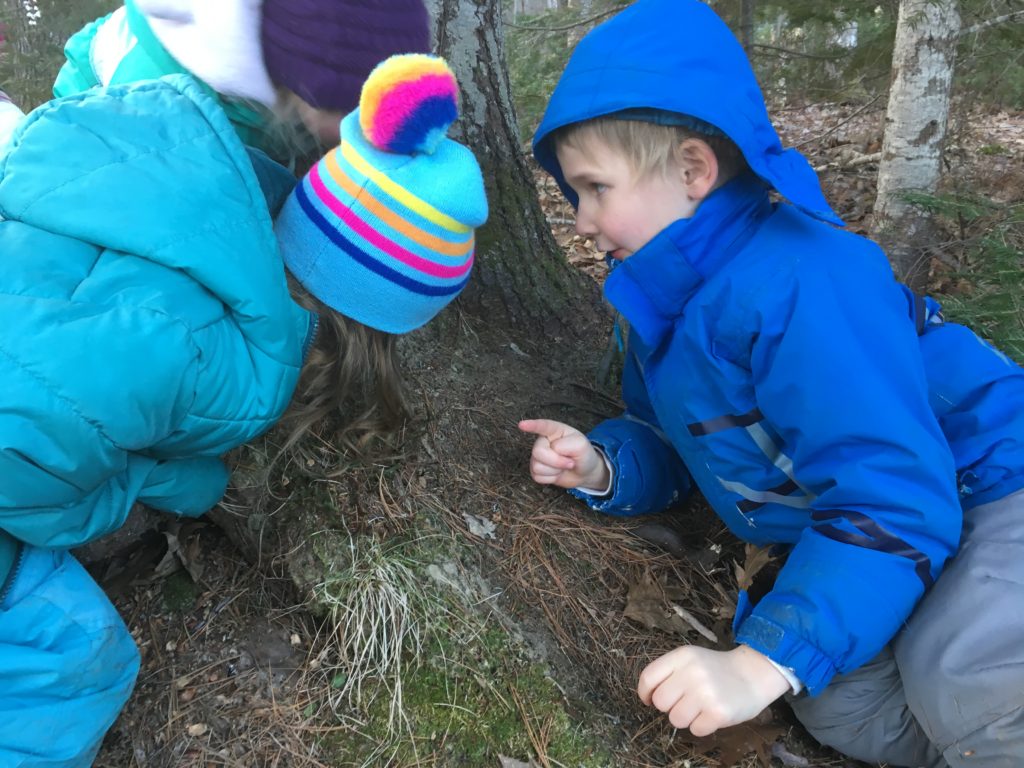
“Mast refers to fruits and seeds of trees and shrubs. Wildlife biologists distinguish two types of mast: hard
and soft. Soft mast includes pine seeds and fruits from vines, shrubs and small trees — persimmon, dogwood, grape, blackberry, and the like. Soft mast is used by wildlife primarily during the summer and fall. Hard mast consists of nuts. This includes beech, hickory, walnut and others, but acorns are by far the bulk of the hard-mast crop.”
“Following good mast years, animals are well-nourished, reproduction rates soar and wildlife populations increase. Poor years produce the opposite effect.”
“Red-oak acorns which take two years to mature and are exceptionally high in fat — don’t sprout until the following spring, even when buried. As a result, they’re storable. Birds and animals rely primarily on red-oak acorns for their winter stash.”
To read more see Mother Earth News: In a Nutshell by Terry Krautwurst
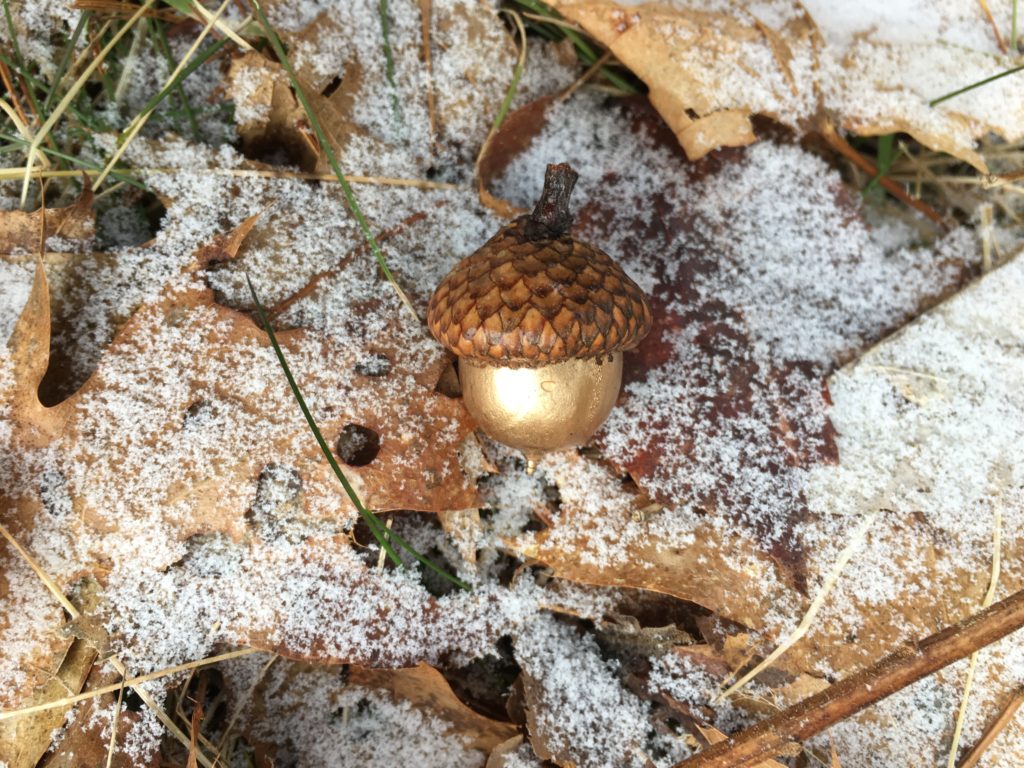
By Landere Naisbitt, Outreach Coordinator
Thank you, Mary Tobey, for use of your beautiful acorn flour-making photos!